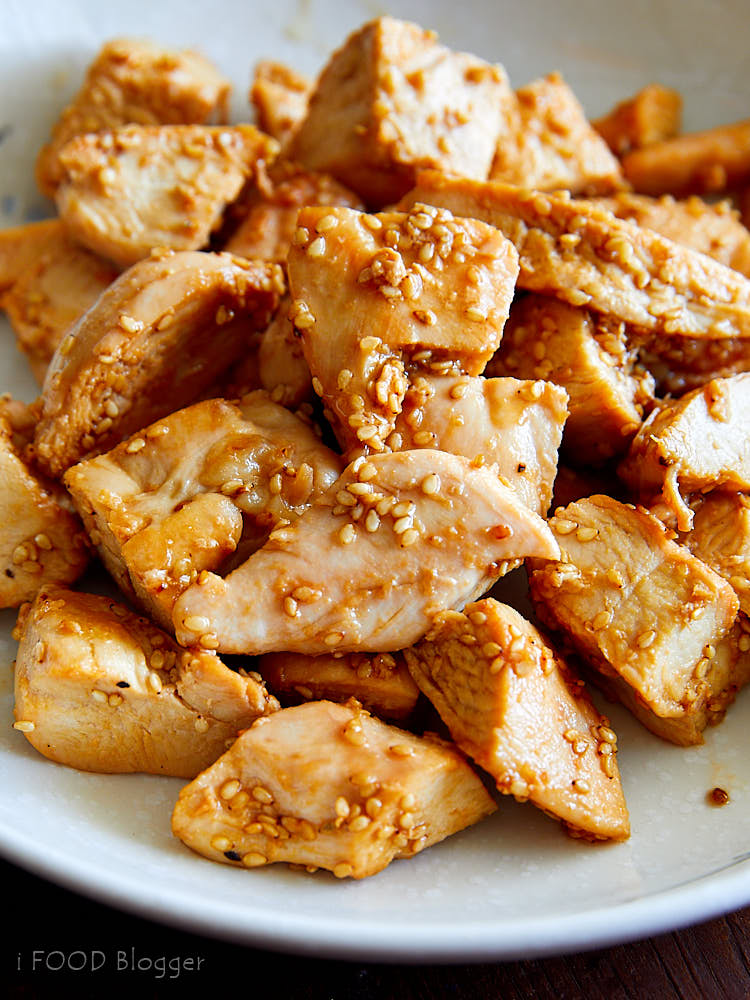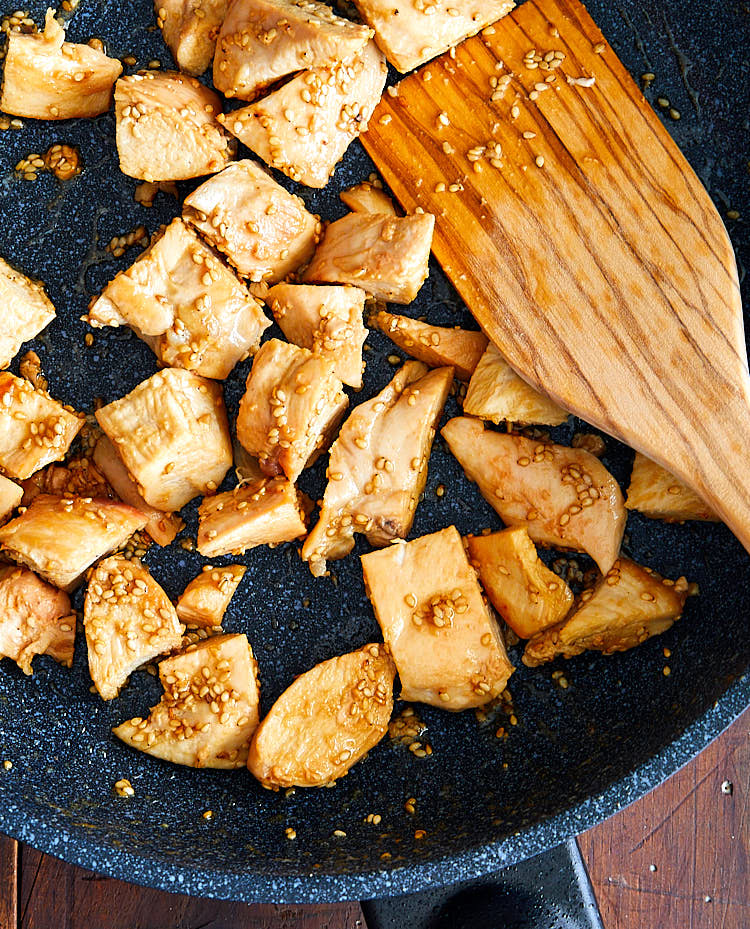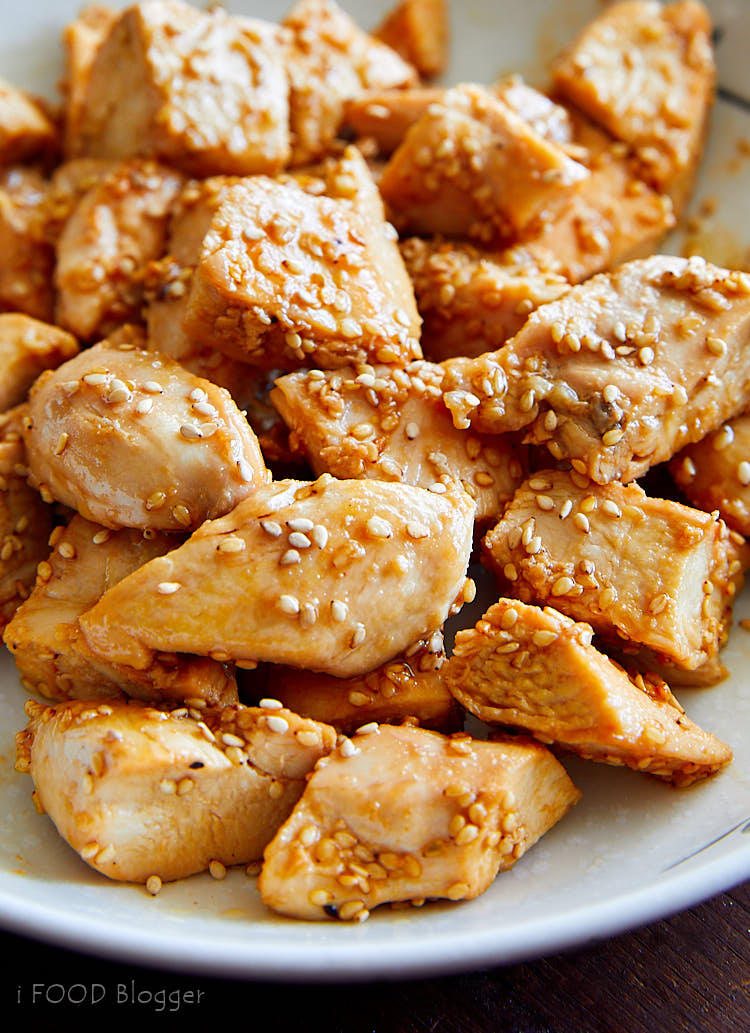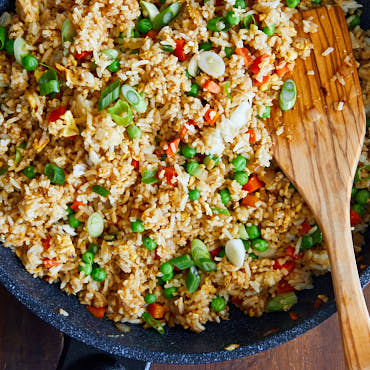This hibachi chicken recipe is by far the easiest and the most effective way to make hibachi chicken at home that I know of, and only takes minutes to prepare. And if you have a dream of having hibachi chicken at home every day, this recipe is your answer. And no, you won’t need to put a ginormous hibachi grill in your kitchen. Do you like hibachi chicken that they prepare on those huge, flat metal grills in Japanese hibachi restaurants? I am a sucker for juicy, buttery, melt-in-you-mouth tender hibachi chicken, served with hibachi-style rice and grilled vegetables. I could eat this kind of food every day. And let me tell you, I stopped going out for hibachi a while ago because this hibachi chicken recipe made it unnecessary for me. I’ll even go as far as to say that this chicken beats most, if not all, of the ones I tried. Hibachi means “fire bowl” in Japanese and refers to an open-top ceramic bowl that contains burning charcoal for heating purposes. In North America, the word hibachi describes an iron hot plate or a flat grill. At home, all you need to make hibachi chicken is a non-stick frying pan. You don’t even need to use a wok.
The challenges with making hibachi chicken at home
Some time ago I was dead set on finding a great hibachi chicken recipe, went through dozens of them, and found nothing that would make me happy. After some experimenting I realized that the key to making proper hibachi chicken was not following exactly what hibachi chefs do. This sounds counter-intuitive but let me explain.
Overcrowding
Pretty much every hibachi chicken recipe out there starts off with 4 chicken breasts. Yes, that’s what they do in hibachi restaurants, and sometimes they cook even more. But you have to realize that the size of a hibachi grill is many times larger than that a frying pan. Overcrowding leads to drop in temperature, liquids accumulating at the bottom of the pan and the meat not browning properly, which leads to lack of flavor.
Cooking full breasts
You see, hibachi grills are designed to have hot, medium and warm spots, allowing the chef to switch between high heat and low heat in a matter of seconds. This allows the chef to control the browning of the meat and the cooking time, ensuring that the chicken and the sides (rice, veggies) are done at approximately the same time. At home, we are very limited. To get similar control we’d need to use two or three pans at the same time. This is very impractical. Cooking a full-size chicken breast, without a liquid of some sort, on a frying pan is a tricky business as by the time the thickest part is cooked through most other areas have turned dry, rubbery and chalky.
Cutting the chicken too early
The last one is more of a ‘don’t follow what some poorly-thought-trough recipes instruct’ rather than ‘don’t follow what hibachi chefs do’. One of the worst experiences with making hibachi chicken I had was when I followed a recipe offered by a well-known copycat recipe developer. The recipe instructed taking 4 chicken breasts, cutting them into pieces and sauteing in a frying pan. I ended up with a pile of pale, flavorless rubbery balls, with a cup or two of juices accumulated at the bottom of the pan. Never again!
The solution to making perfect hibachi chicken
The solution came from my long-time favorite way to cook chicken breasts on a pan – cutting them in half lengthwise and letting them fry for three minutes on each side over medium-high heat. This works like a charm, every time. Here is why. High heat allows the liquid to evaporate quickly, without drying out or burning the chicken because the breast are cut thinly and cook much faster. High heat removes moisture quickly and allows for great browning. Overcrowding is not an issues due to less meat on the pan and higher cooking temperature. When cooking the chicken I partially cover the pan with a lid to let some of the steam escape but trapping some of it inside the pan to cook the chicken form the top. This way I get perfect browning and a super fast cooking time. All it takes is 6 minutes to fully cook a chicken breast. Once the cooking of the chicken part was solved, the rest was very easy – just add the rest of the ingredients, mix and serve. Simple as that. There is another advantage to my method – you don’t have to fiddle with multiple pans to cook rice and chicken, or vegetables and chicken. All you need to do is cook the rice and/or vegetables first, set them aside on a warmer, then prepare the chicken. It will be done so quickly that the side dishes won’t have enough time to cool down.
Other tips and tricks
I’ve seen some hibachi chefs add sesame seeds and sesame oil to hibachi chicken, some don’t. I always do as that adds a tremendous amount of flavor. Some chefs add mushrooms to their chicken. I like to cook them separately as the liquid released from mushrooms interferes with browning. It’s easy to do that on a large hibachi grill but practically impossible on 12-inch pan. Besides, mushrooms cook differently from chicken so it’s impractical to cook them at the same time in the same pan. Teriyaki sauce can be a great addition to the hibachi chicken if you like it, and I’ve seen a few chefs add it. One or two tablespoons in this recipe will be enough. If you do, you may want to skip the sesame oil which will overpower the teriyaki sauce. Try this chicken with my super popular hibachi rice. I recommend that you make the rice first and keep it warm while making the chicken.





